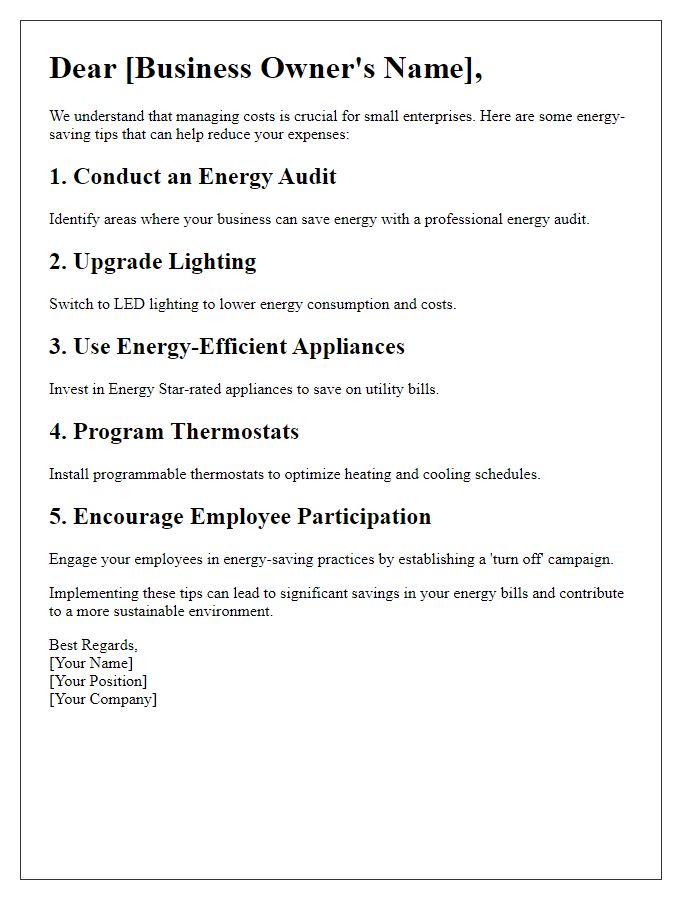Are you looking to cut down on those rising utility bills while making a positive impact on the environment? Implementing simple power-saving techniques can significantly reduce your energy consumption and save you money in the long run. From adjusting your thermostat to investing in energy-efficient appliances, these practical tips can create a more sustainable lifestyle for you and your family. So, let's dive into some easy power-saving strategies that you can start using today!

Energy-efficient appliances
Energy-efficient appliances play a crucial role in reducing electricity consumption within households and commercial settings. Devices such as ENERGY STAR rated refrigerators, washing machines, and LED light bulbs utilize advanced technology to minimize energy usage while maintaining performance standards. For instance, ENERGY STAR certified appliances can save approximately 10-50% more energy compared to their non-efficient counterparts. Additionally, using appliances during non-peak hours can lead to further reductions in energy costs. Implementing energy-efficient appliances can significantly decrease greenhouse gas emissions, contributing to a cleaner environment and leading to long-term savings on utility bills.
Off-peak usage scheduling
Switching to off-peak usage scheduling can significantly reduce electricity costs for households and businesses during high-demand times. Off-peak hours, typically between 10 PM and 6 AM, offer lower rates through utility providers such as Pacific Gas and Electric or Con Edison, incentivizing users to shift energy-intensive tasks. Appliances like dishwashers (which consume up to 1.5 kWh per load), washing machines, and electric heaters should be programmed for nighttime usage. Strategically managing electricity consumption during these hours not only lowers monthly bills but also aids in reducing strain on the electric grid, especially during peak demand periods, contributing to a more sustainable energy ecosystem.
Enhanced insulation
Enhanced insulation significantly reduces energy consumption in residential and commercial buildings. Proper insulation materials, such as fiberglass, foam boards, and spray foam, can lower heating and cooling costs by up to 30%. In colder climates, such as the Northern U.S. states, insulating attics and walls prevents heat loss during winter months, maintaining comfortable temperatures. Similarly, in warmer regions like Arizona, reflective insulation reduces heat gain, lessening the burden on air conditioning systems. The Energy Star program recommends a minimum R-value (thermal resistance) for insulation based on local climate zones, ensuring optimal energy efficiency. By investing in enhanced insulation, homeowners can not only save money on utility bills but also contribute to environmental sustainability by reducing reliance on fossil fuels for heating and cooling.
Regular maintenance checks
Regular maintenance checks are essential for optimizing energy efficiency in household electrical systems. Scheduled inspections ensure that appliances, such as refrigerators, water heaters, and HVAC units, operate at peak performance, reducing energy consumption significantly. Professional services often examine electrical connections, identifying issues like frayed wires or loose fittings that can lead to increased power usage. Additionally, cleaning air filters in heating and cooling systems can enhance airflow, contributing to lower electricity bills. Homeowners should also consider upgrading to energy-efficient appliances, which can save up to 30% more energy, extending the lifespan of devices while minimizing environmental impact and utility costs.
Renewable energy adoption
Implementing renewable energy sources such as solar panels can significantly reduce electricity bills for residential and commercial properties. The installation of photovoltaic (PV) systems harnesses sunlight, converting it into usable power, with average savings of 50% on energy costs. Wind turbines, where applicable, can complement solar energy, especially in regions with consistent wind patterns. Additionally, adopting energy-efficient appliances, rated at least Energy Star, can further decrease consumption, enhancing the overall effectiveness of renewable energy systems. Local incentives, such as tax credits from state governments or federal programs, can also mitigate initial setup costs, making the transition to greener energy more financially feasible. These strategies contribute not only to personal savings but also to reducing the carbon footprint, leading to a more sustainable environment.
Letter Template For Utility Power Saving Tips Samples
Letter template of power management suggestions for commercial properties

Letter template of eco-friendly electricity usage for community organizations












Comments